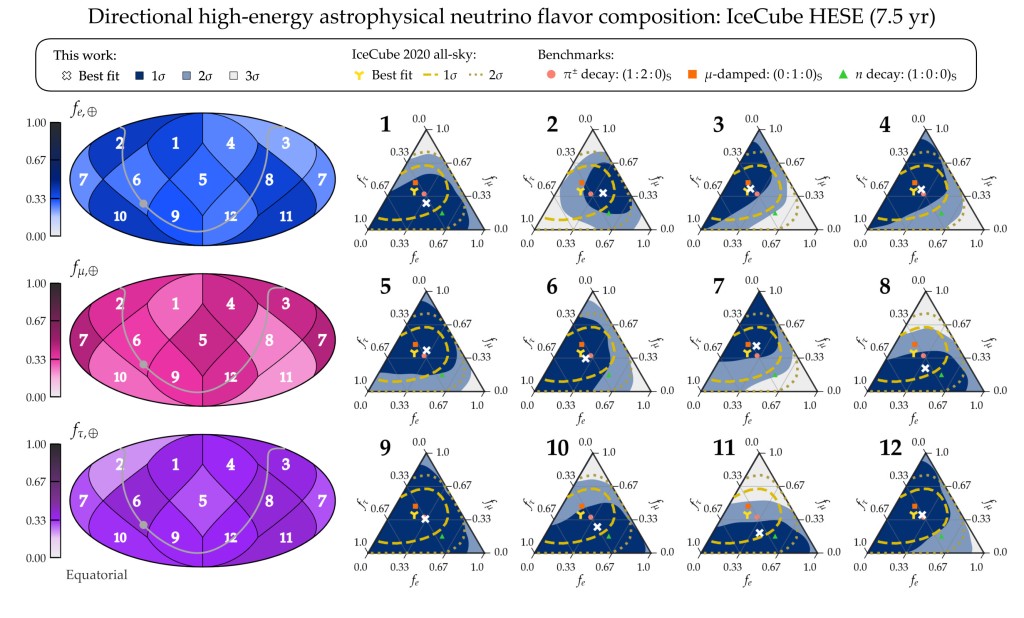Neutrino telescopes, like IceCube, measure the directions with which high-energy neutrinos arrive at them. They also measure the flavor composition of the diffuse flux of high-energy astrophysical neutrinos, i.e., the the proportion of electron, muon, and tau neutrinos in the total flux. So far these capabilities have been kept largely disconnected from each other.
In a new paper led by NBI PhD student Bernanda Telalovic, for the first time, we bring them together to forge a new observable: the directional dependence of the high-energy neutrino flavor composition. From the distribution of arrival directions in a sample of detected events, we infer the directional dependence of the flux of electron, muon, and tau neutrinos responsible for it. To do that, we take a sample of IceCube HESE (High-Energy Starting Events) event sample and undo the detector response.

Our newly gained sensitivity to the directional dependence of the flavor composition allows to look for the contribution of different source populations to the diffuse flux, each producing neutrinos via a different mechanism and distributed differently in the sky. It also allows us to improve constraints on a poorly explored form of Lorentz-invariance violation, compass asymmetries, but about fifteen orders of magnitude vs. present-day limits.
Read more at
Flavor anisotropy in the high-energy astrophysical neutrino sky
Bernanda Telalovic & Mauricio Bustamante
2310.15224 astro-ph
